Amazingly flaky, light and tender gluten free pie crust recipe isn’t difficult to make when you use the right ingredients and follow some easy how-to steps with this recipe. In fact, this is THE BEST GLUTEN FREE PIE CRUST RECIPE because it’s the simplest gluten free pie crust recipe and it turns out so well every time.
Only 5 ingredients, one bowl and the confidence to believe in grandma (I mean, grandma is always right), you can’t go wrong with this recipe!
Light and flaky gluten free pie crusts are possible with gfJules Flour!
What’s The Secret to the Best Gluten Free Pie Crust?
I’ll let you in on a little secret: lots of other gluten free pie crust recipes tell you that you have to press the crust in the pan. That’s because you can’t roll their crusts.
Lots will tell you that you have to add sugar. That’s because they’re covering up for gritty tasting gluten free flours.
Lots will tell you that it’s difficult to make a good gluten free pie crust. That’s because … well, because they haven’t tried the best gluten free pie crust recipe — this gluten free pie crust recipe.
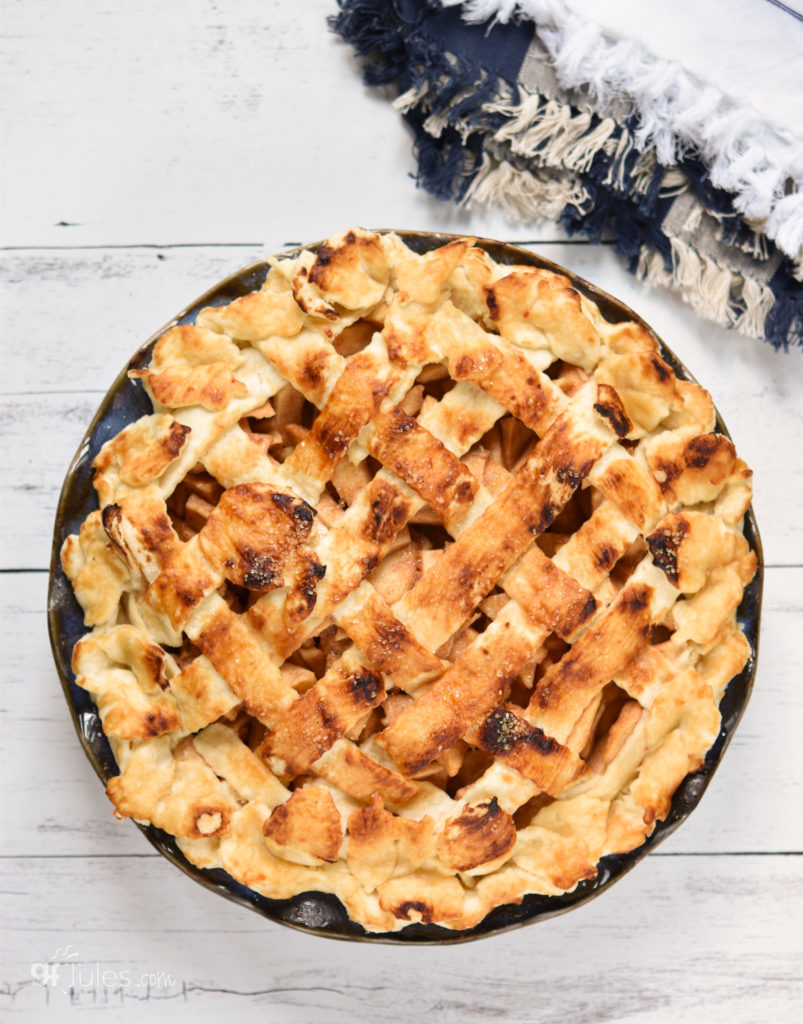
Fair warning: the intro to this recipe is l-o-n-g, NOT because it’s difficult to make a great gluten free pie crust, but because I want to REASSURE you in every possible way (photos & videos) that it’s really quite easy to make the best gluten free pie crust and that YOU can do it!
If you already trust me, then just jump right to the recipe and do exactly as I say. Don’t substitute ingredients and don’t skip any steps. You won’t regret it!
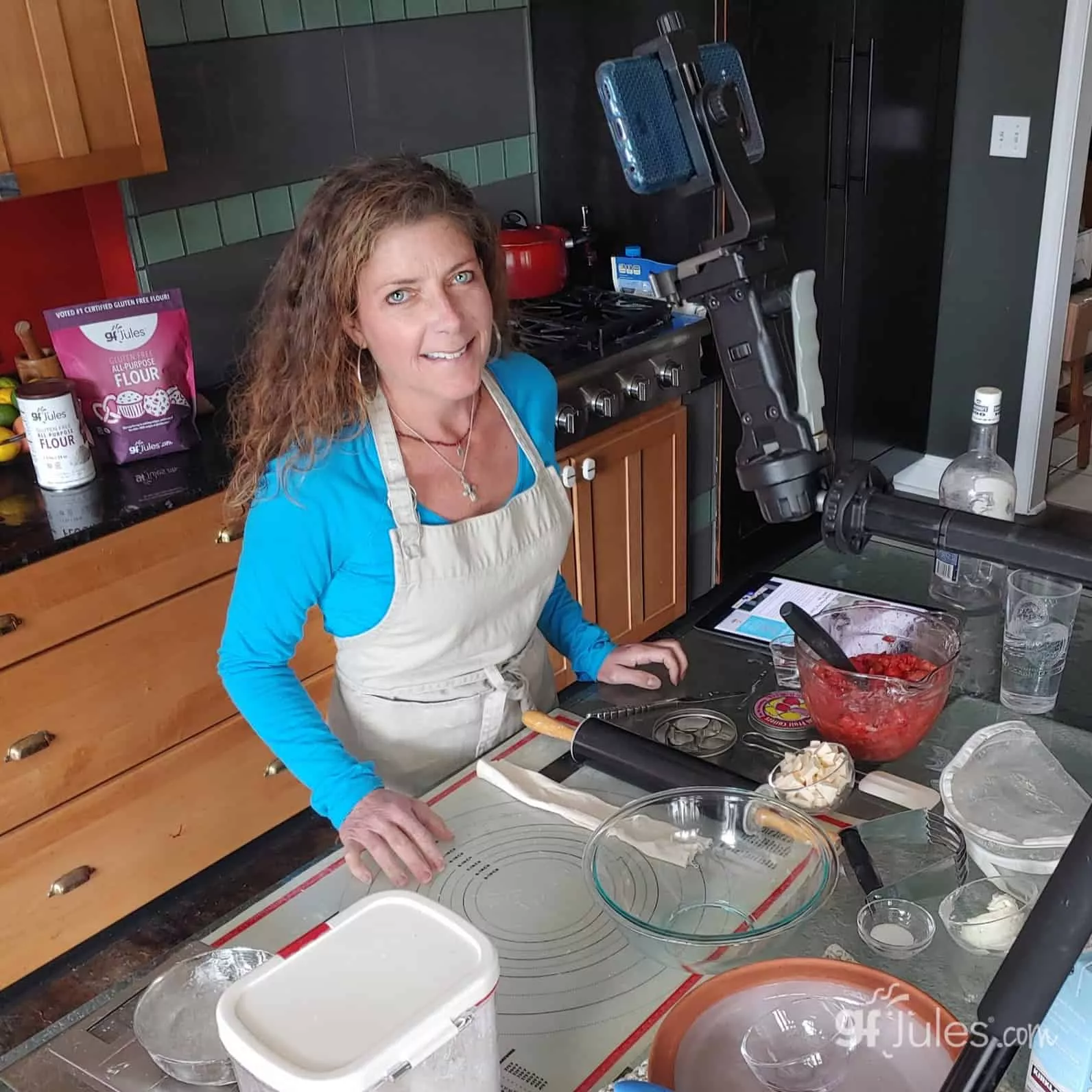
I’ve written out my secrets and tips, I’ve shared my fool-proof gluten free pie crust recipe, I’ve included videos of the steps, I’ve recorded a podcast to walk you through everything you need to know to make a great gluten free pie crust, and I’ve shared step-by-step photos so you can consult this post as you make a pastry for yourself.
Don’t let the length of the post scare you — it’s all here to help!
Just look at this gorgeous, flaky gluten free pie crust. It’s within reach, and YOU can make it, even if you’ve never made a homemade pie crust in your life!
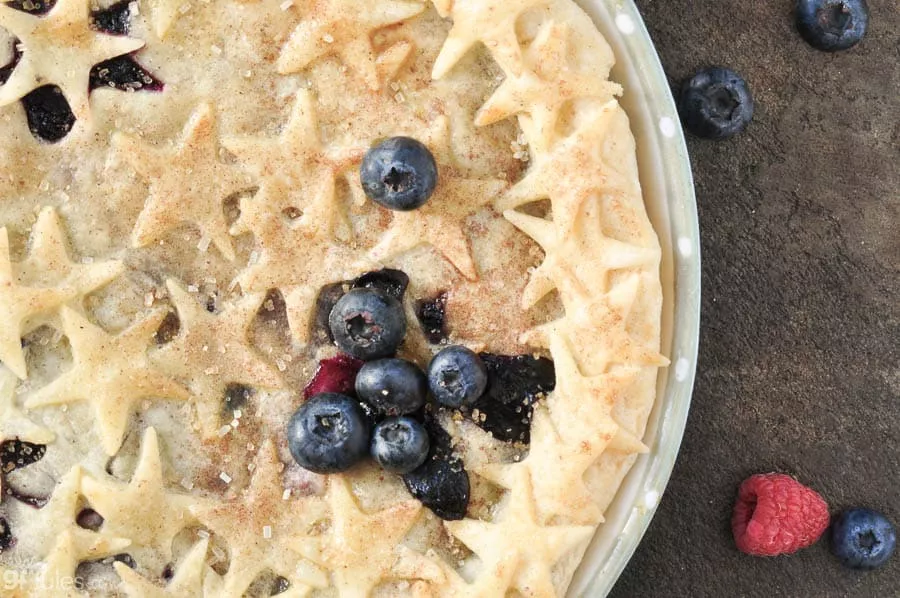
How Do I Make the Best Gluten Free Pie Crust?
I’m here to SHOW you how to make the best gluten-free pie crust with a simple recipe, photos, video and even a podcast! I’ve traveled the country speaking to gluten-free groups and teaching gluten-free cooking classes, and it seems that rolling out pie crusts is the one thing that scares people the most about baking gluten free. There are many techniques I’ve developed over the years, and I’ve gotten it down to quite a science!
One way many folks find it easy to roll out and transfer crusts is by using a pie crust bag.
Check out this video below.
If you haven’t seen one of these handy kitchen accessories, take a look at my video showing how to use them! (You can also find these in my store)
Another favorite of mine is using a silicone or cloth pastry mat and my favorite rolling pin covers. Together, they are so versatile and make it easy to transfer gluten-free pie crusts or to roll out sugar cookies or ravioli or or or … you get the idea!
Here’s a quick video of how to transfer a gluten free pie crust using a rolling pin and a silicone mat.
I also have a video showing how to use these mats and rolling pin covers for rolling out gluten-free pie crusts.
Consult my recipe below and be sure to look at the step-by-step photos at the bottom, where I show how to transfer the crust.
Because doughs made with my gfJules Flour actually have STRETCH to them, it makes it easy (yes, easy!) to transfer pie crust without tears! (Or maybe that was just me who cried over broken, crumbly gluten free pie crusts when I first got started???)
But the most important trick to making a deliciously flaky and remarkably easy-to-roll-out gluten-free pie crust, is to start with the right ingredients.

What Ingredients Make The Best Gluten Free Pie Crust?
gfJules™ All Purpose Gluten Free Flour hands-down makes the best gluten free pie crust. It’s already light and clean and grit-free. The special blend of gluten-free flours and xanthan gum gives doughs extra stretch, making it far easier to roll and transfer top and bottom crusts.
A combination of butter (or non-dairy alternative like Miyoko’s Vegan Butter or lactose free Green Valley Organics® Lactose Free Butter) as well as shortening makes for a flakier crust. Note: I do NOT like using coconut oil in place of shortening. It doesn’t play nicely with the flour and makes for an oily dough that is more brittle and sticky — no fun to work with!

Using cold water and a surprise secret ingredient that no one will ever taste (spoiler alert: secret ingredient is vodka or other distilled grain alcohol) also makes it easier to work with the dough, and yields an amazingly delicious crust that’s flaky and soft every time. (And yes, the secret ingredient is gluten-free, of course!)
This secret ingredient is IMPORTANT. Please use it, as well as shortening + butter, as well as gfJules Flour to achieve the lightest, softest, flakiest gluten-free pie crust. If you cannot use the secret vodka ingredient, use white vinegar in its place for the most tender crusts.
Why Don’t Gluten Free Pie Crusts Brown Like Gluten Crusts Do?
Gluten-free pie crusts don’t brown like wheat crusts because they have less protein in the flour. If you don’t add sugar to the crust or brush the top of the crust with egg wash or something with protein in it, there’s nothing to brown, but don’t let that fool you into thinking your crust isn’t cooked! DO NOT OVERCOOK YOUR PIES.
If you wait for your gluten-free pastry to brown before you take it out of the oven, it will become hard and over-cooked. This is one reason it’s important to brush your crust before baking with either egg wash (one whole egg, mixed, plus 1 tablespoon water or milk) OR milk so that the crust won’t dry out while cooking and will brown more.
The egg wash or milk will be what browns, not the flour crust. You can also sprinkle cinnamon-sugar on your crust for more color, if you like.
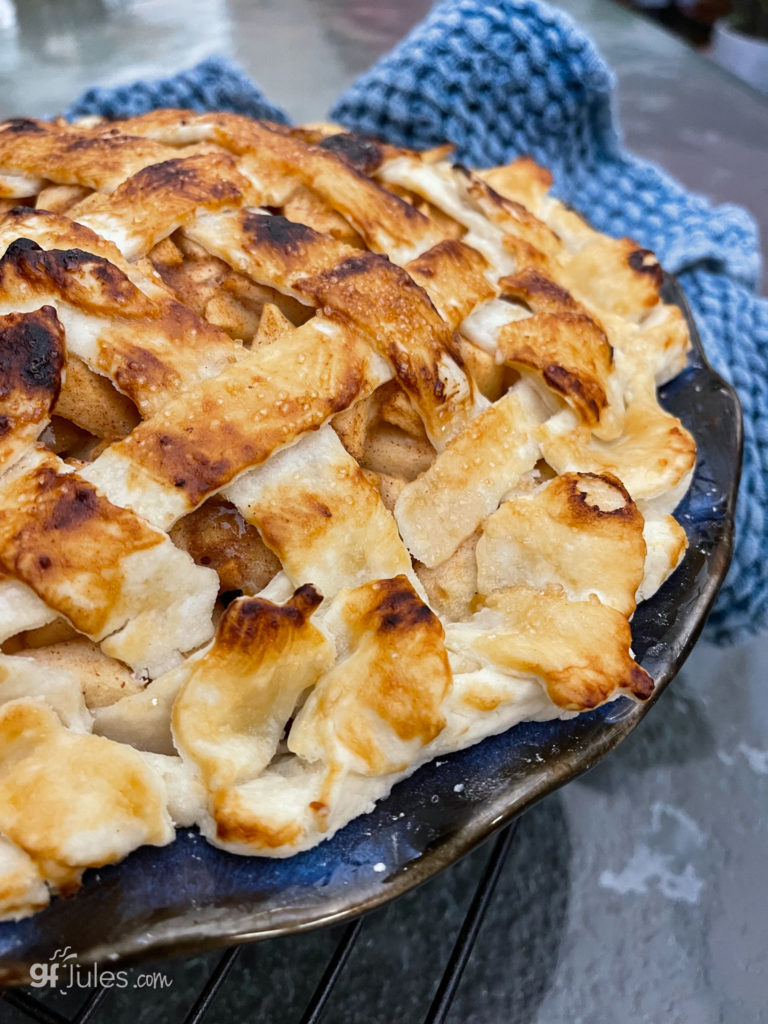
FAQs for Gluten-Free Pie Crusts
I find myself answering lots of emails in advance of pie baking season and folks are all worried that they’ll make a tough pastry crust.
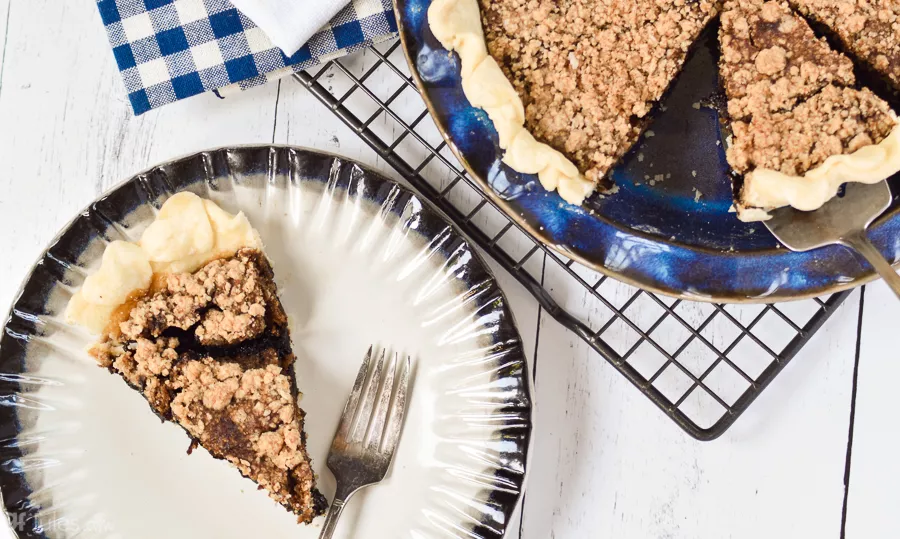
In answer, I usually write pretty much the same things, so I’ll copy a note I wrote recently below, as it’s a good recap of the main tips for making the best gluten-free pie crust.
Top Tips for how to get the flakiest gluten-free pie crust:
- For the flakiest gluten free pastries, make sure the butter is super cold when adding it. I like to cut it into pieces and then put it in the freezer while I’m measuring the flour and getting everything ready. Be sure to measure your flour properly for this, and every gluten free recipe. It’s super important!

Gluten Free Apple Pie baked in Emile Henry Pie Plate. - When you add the butter, cut both it and the shortening into the flour/salt mixture with a pastry cutter or two knives cutting against one another, and only cut it as much as you need to integrate the fats into the flour into small balls, without working it too much. Then add the vodka or vinegar or cold water (start with only 3Tbs) and mix with a fork, adding only as much more cold water as you need to get the dough to hold together without being wet. A wet dough is a heavy dough and you don’t want that!

- Then wrap the dough in cling wrap and leave on the counter for 30 minutes if it’s not too warm in the kitchen, or refrigerate for about 10-15 minutes if you think you worked it too much or the kitchen is warm.
-
Roll it out and into the pie pan and then … I’ve found that covering the crust with wrap again in the pan and putting it in the freezer while you work on other things, THEN filling the crust, is a great way to keep those fats nice and cold before baking.
-
The steam that is generated from the fats melting in the oven is what causes most of the flakiness, so if you have lots of little balls of fat throughout the crust, as opposed to melty strands of fat, it creates more flakiness.
-
That being said, overcooking the crust can also make it tough, so brush the crust with egg or milk to help it brown so you aren’t tempted to leave it in the oven too long, waiting for it to brown.

See below for step-by-step photos!
Here are some videos showing the recipe in action
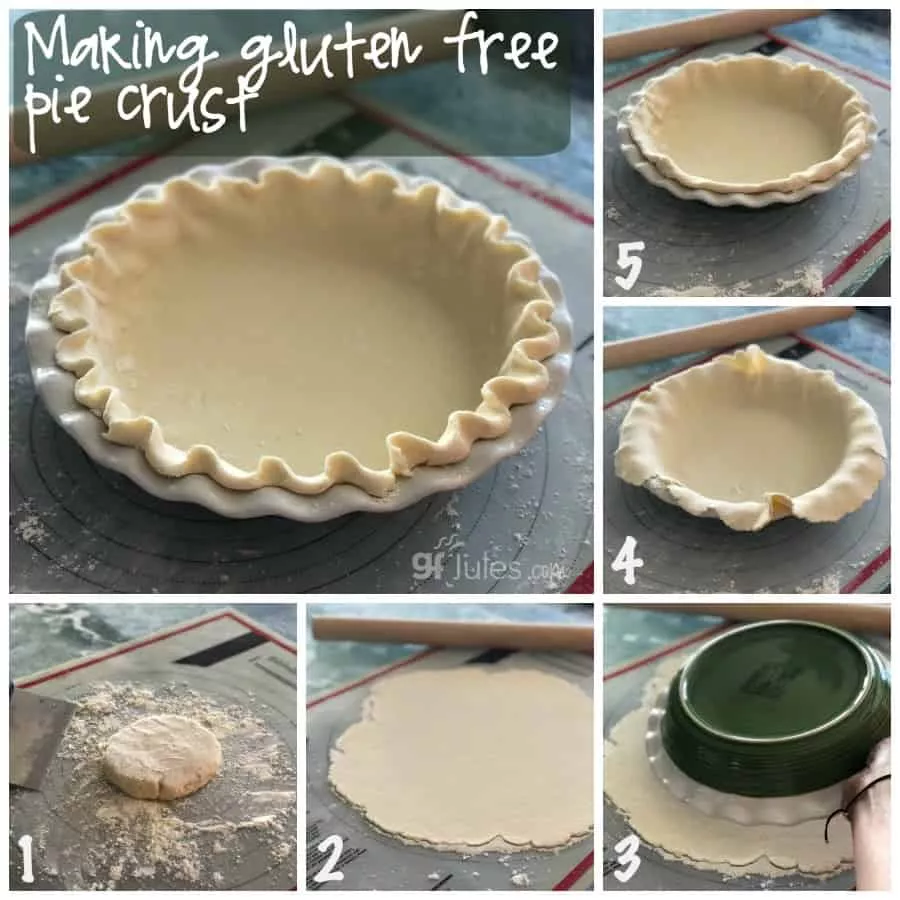
The BEST Gluten Free Pie Crust Recipe
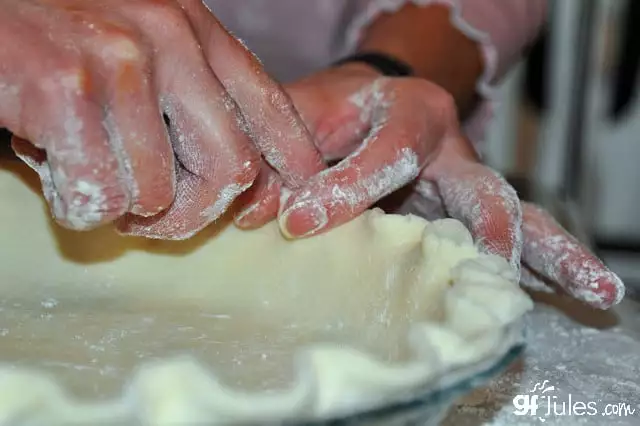
Gluten Free Pie Crust Recipe and Tips
Equipment
Ingredients
1 Gluten Free Pie Crust (double for 2-crust pie)
- 1 (135) cup (grams) gfJules® All-Purpose Gluten Free Flour
- 1/2 teaspoon sea salt
- 2 (1) Tbs (ounce) shortening OR lard OR cream cheese/vegan cream cheese (1 1/8 ounce) (I recommend Spectrum® Organic Palm Shortening*
- 3 (1 ½) Tbs (ounce) COLD butter or non-dairy alternative
- 3 Tbs vodka** (OR white vinegar)
- 1-2 Tbs cold water add more or less to get the dough to hold together but not be sticky
- egg wash (1 egg + 1 Tbs. water) OR milk (dairy or non-dairy) for brushing on crust
Instructions
To Make the Dough:
- In a large bowl, whisk together the dry ingredients.
- Cut in the shortening/cream cheese and cold (not frozen, but very cold) butter using a pastry cutter (or the flat paddle attachment on a stand mixer or a food processor).
- Add the vodka & water gradually to make the consistency you need to form a ball -- err on the side of it being wetter rather than crumbly, but only add the liquid you need to get it to hold together, not too much! Do not over-work the dough, or it may become tough when baked.
- Form a disc with the dough, wrap in plastic and set aside on the counter for 30 minutes or refrigerate while you make your filling.
Rolling the Dough:
- After allowing the dough to rest, roll the pastry out onto a surface dusted well with gfJules All Purpose Gluten Free Flour.
- Use a flexible pastry mat (e.g. Silpat or cloth mat) and rolling pin covers or a pie crust bag for rolling and transferring your gluten free crust easily.
- Gently roll in each direction — do not press down on the pin while rolling — to a circle with a diameter at least 1 inch larger than that of your pie pan.
- Click on the pictures above the recipe card for quick videos on how to easily transfer a gluten free pie crust into the pan.
To Transfer the Crust:
- 1- Gently lift an edge of the rolled out crust over your rolling pin. 2 -With one hand under the baking mat, use the pin in the other hand to lift the crust so that it is supported by the rolling pin as you pull the crust gently off of the baking mat. 3- Transfer gently over the pie plate to center. 4- Drop gently into the plate and allow crust to slump into pan. 5- Pat into your pan. (See photo above recipe card)

- For a One Crust PieCut the edges of the crust to an even length of approximately 1-inch larger than the diameter of your pie plate.
- Gently fold the edges under, then press with a fork or spoon or pinch into a fluted design between your fingers. Cover with plastic wrap and freeze while you make your fillings.

- Fill with your desired filling.
- For a Two-Crust PieDouble the ingredients and divide the doubled pie crust dough before setting aside. Shape each half into a disc and wrap each in plastic wrap. Repeat the rolling out steps for the first crust and cover with plastic wrap, then freeze for 30 minutes or while you prepare the fillings. Fill the pie and lay the second crust gently onto the top of the filled pie pan.
- Cut off all but 1/2 – 1 inch of excess pie crust from around the edge of the pan. For fruit pies, cut small slits in the center of the top crust to allow the hot steam to escape. Brush the crust with egg wash or your milk of choice – this step helps it to brown nicely.

- If there are any tears in your top crust, never fear! Simply take leftover crust and use decorative cookie cutters to cut out leaves, pumpkins, etc. Wet the backside of each cut-out with a dab of milk, then lay on top of any tears to cover the flaw.
- Use pie crust shields to prevent crust edges from over-cooking.
- Fold approximately 1/2 inch of excess pie crust over all around the edge to form the crust, then using your fingers, press a fluted design or use a fork to go around the crust to finish.
- Your pie is now ready to bake or to freeze for later baking. For directions on how to freeze the pie dough and bake later, hop to my post on that method. To bake now, follow the instructions below.
- Single-Crust: Preheat oven to 400º F (static). Brush the crust with egg wash or milk, then cover edges with foil or pie crust shields to minimize burning. Bake for 15 minutes. Reduce heat to 375º F (static) and bake an additional 20 minutes, remove the pie crust shields, and bake an additional 10 minutes, or follow directions for your specific pie recipe.
- Double-Crust Pie: Preheat oven to 400º F (static). Brush the crust with egg wash or milk, then cover edges with foil or pie crust shields and bake for 15 minutes.
- Reduce heat to 375º F (static), remove foil and brush again with egg wash or milk. Bake an additional 35-45 minutes, or until the juices are bubbling, or follow directions for your specific pie recipe. (Cover again with foil if the crust is browning too much during the bake).
- Unfilled Pie Crust (Blind Bake): Cover crust in pie plate loosely with plastic wrap and refrigerate for 30 minutes. Preheat oven to 375º F (static).
- Prick the bottom of pastry all over with tines of a fork. Cover the pastry with parchment paper and pour pie weights, dry rice or dried beans on top to cover 1 inch. Brush the crust edges with egg wash or milk, then cover crust edges with foil or pie crust shields. Bake for 15 minutes or until the bottom of the crust no longer looks raw.

- Remove the parchment paper and weights. Return to bake for 6-8 minutes if filling with quiche, pumpkin or key lime type filling which will be baked further; for cream pies and refrigerated fillings, bake 10-15 minutes more. Don’t wait for the crust to turn brown before removing or it will have over-cooked. Cool completely on a wire rack before filling for refrigerated pies.
Notes
** Please keep in mind that nutrition information provided is per serving, which may vary. While we have taken care to provide you with the most accurate nutritional values possible, please note that this information may differ significantly depending on the exact ingredients and brands that you choose to use to make this recipe. Additionally, where options are given for ingredients, the resulting calculation may include all ingredient options instead of only one per line, skewing the totals significantly.
I hope you love this recipe as much as we do!
Pin it for later!
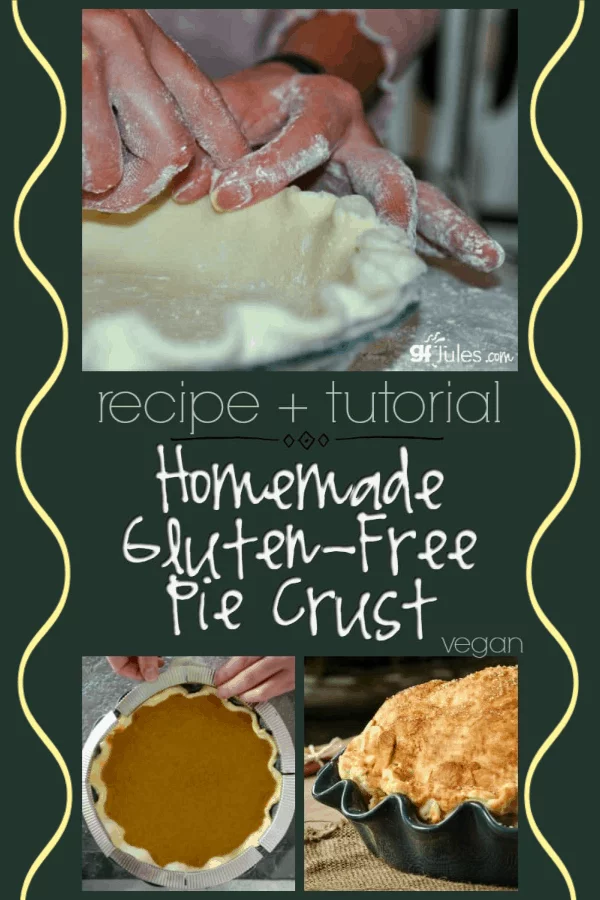
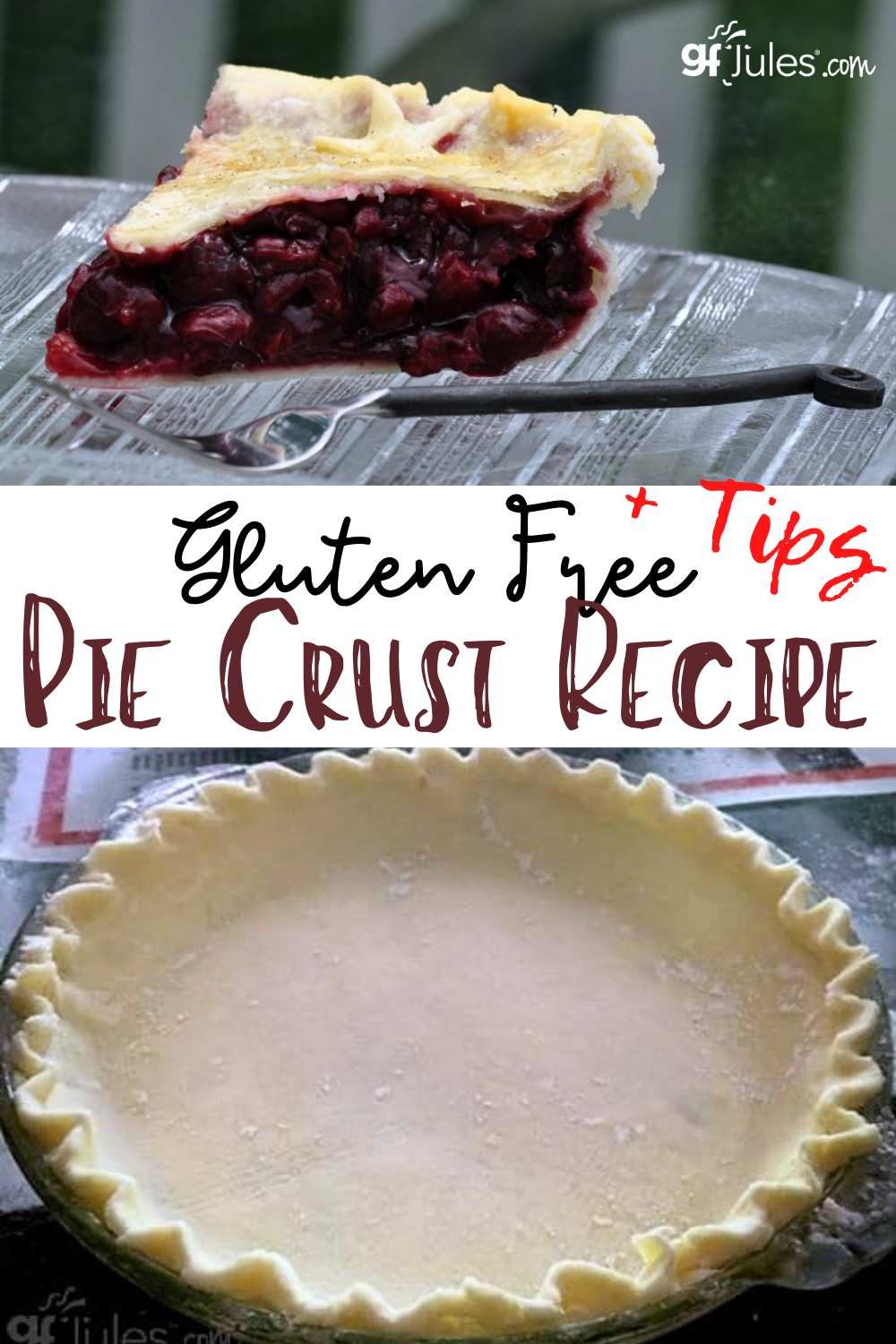

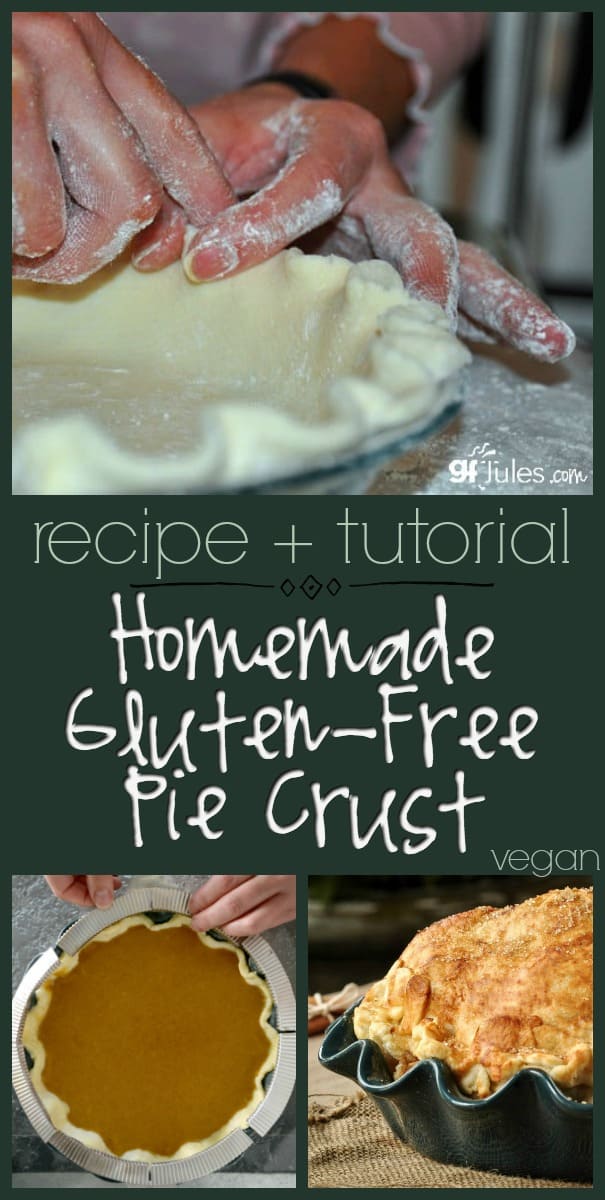

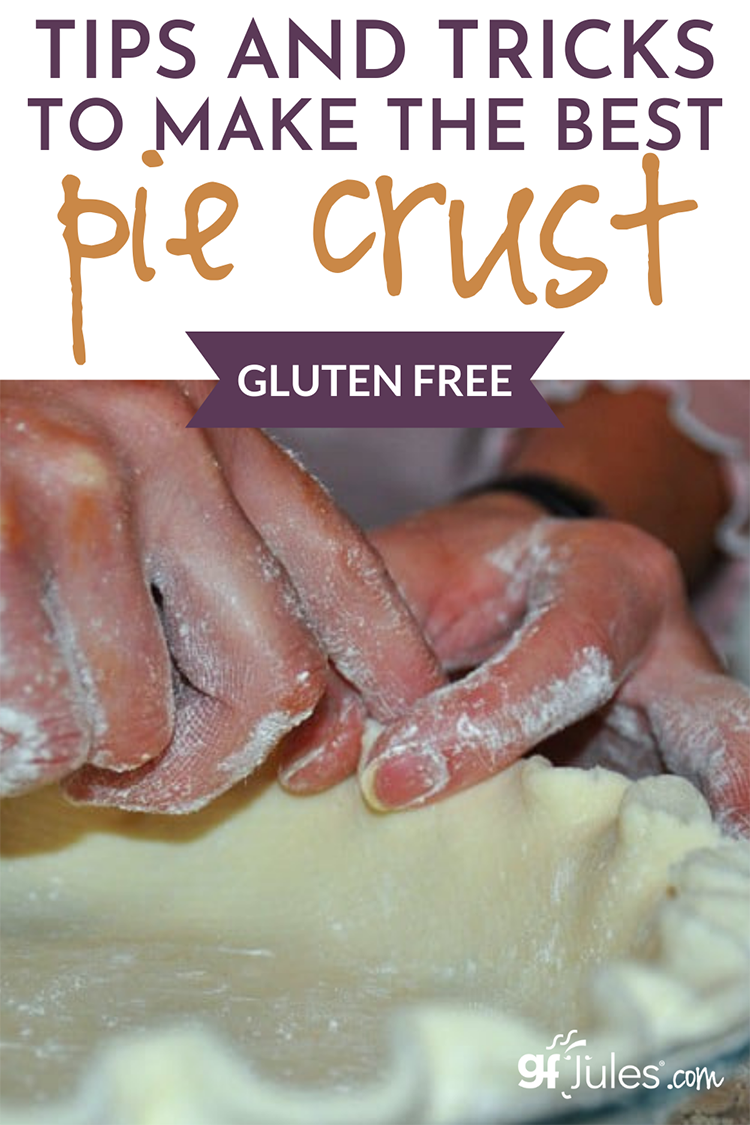
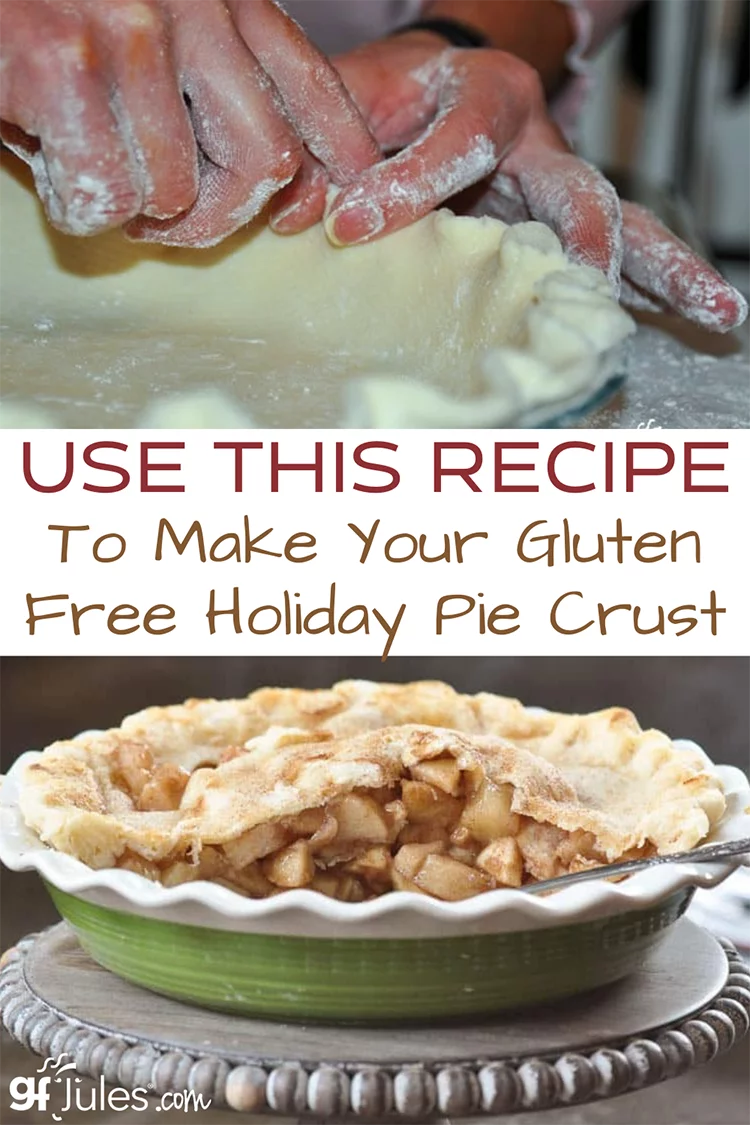


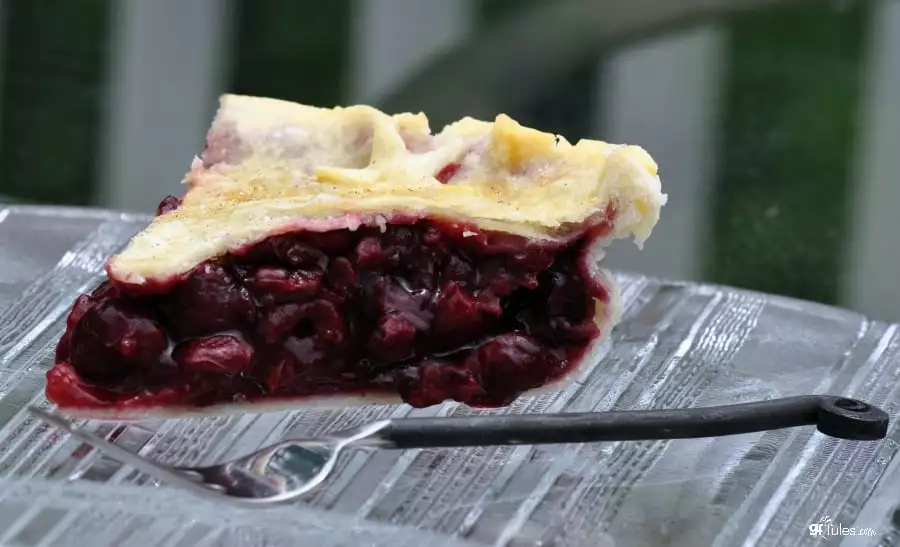

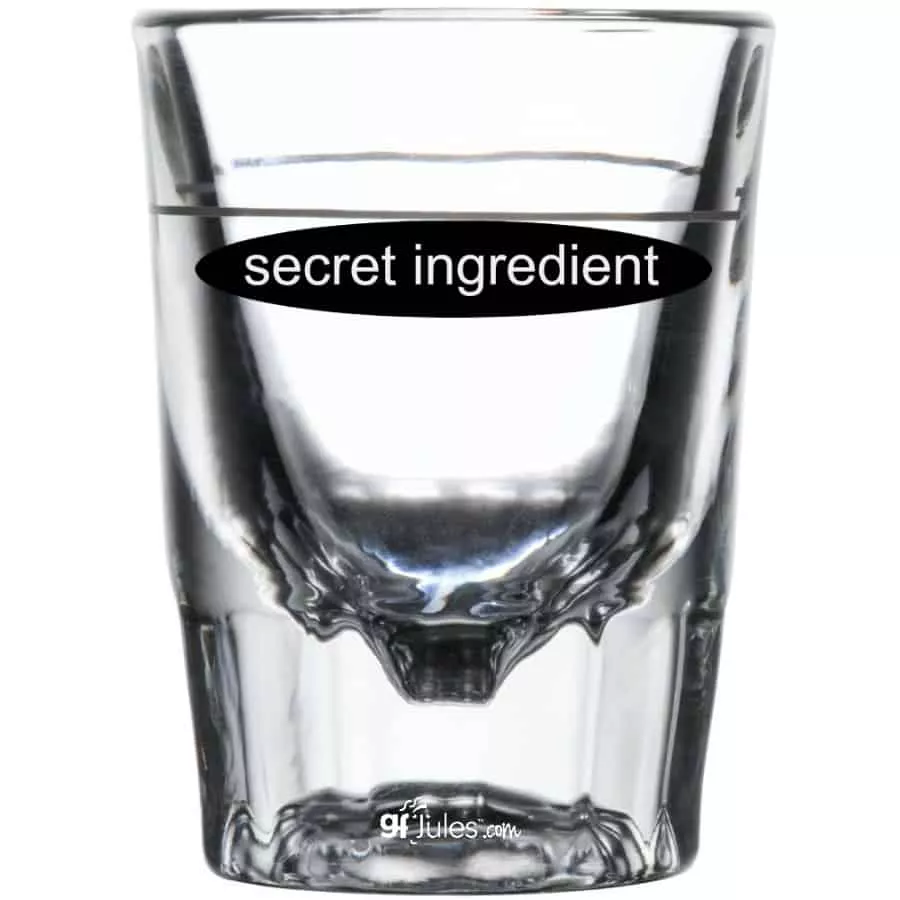
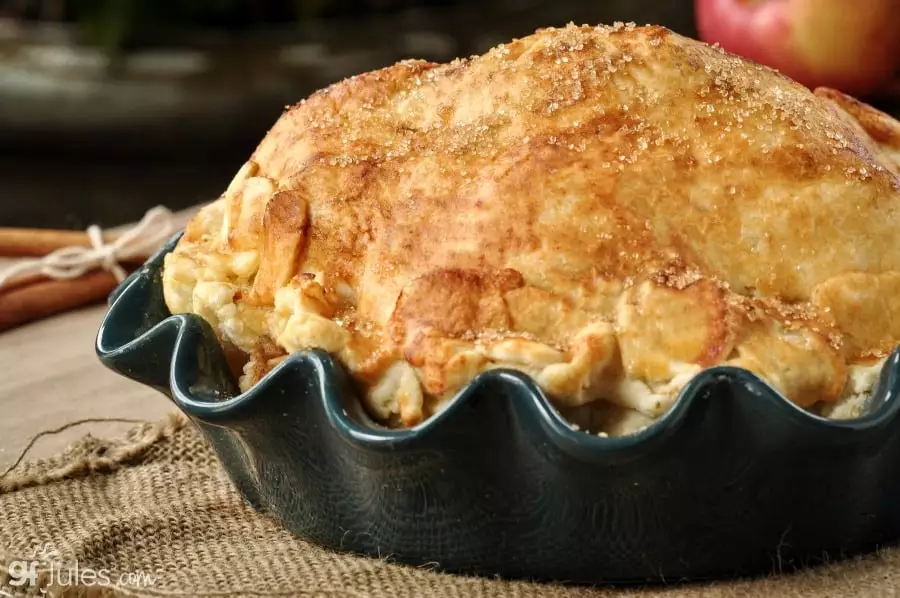
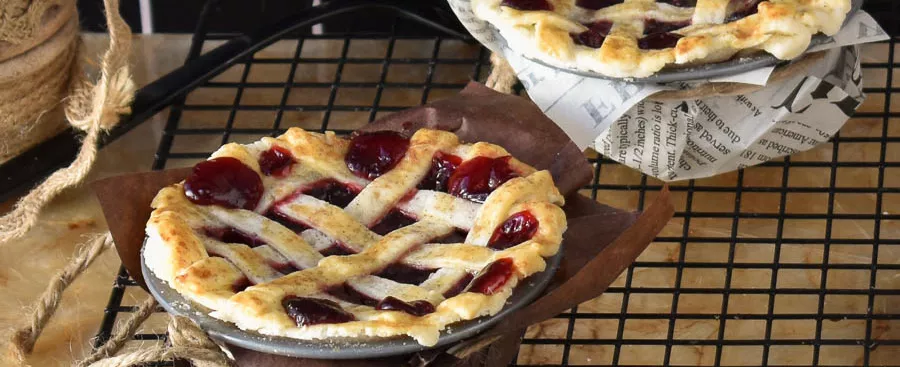
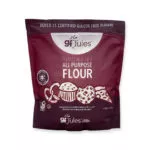














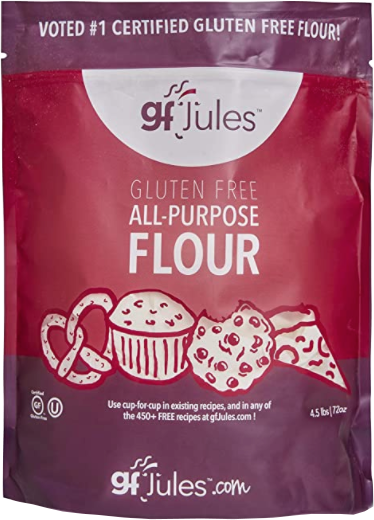
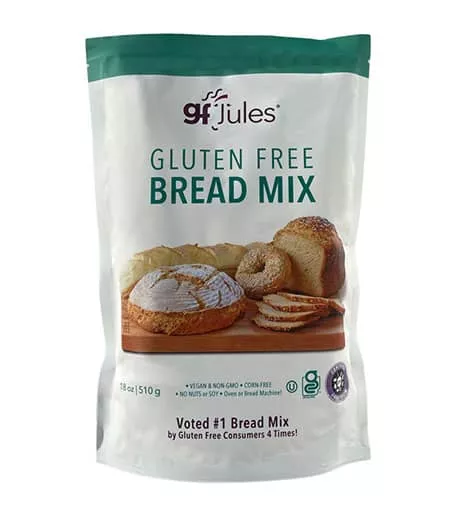

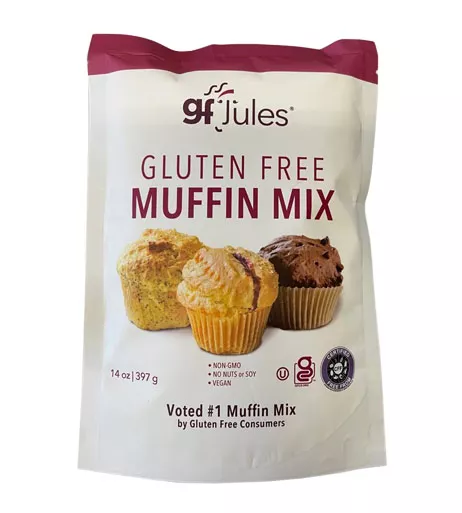


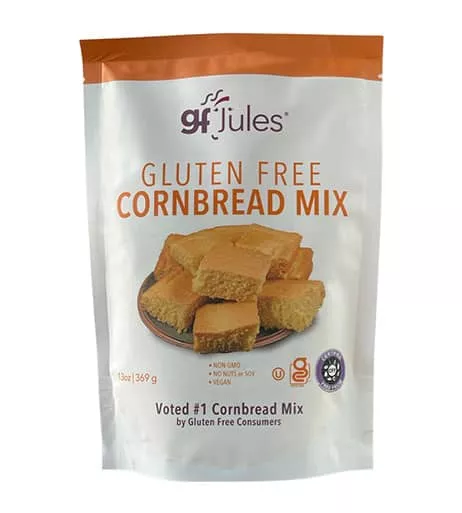



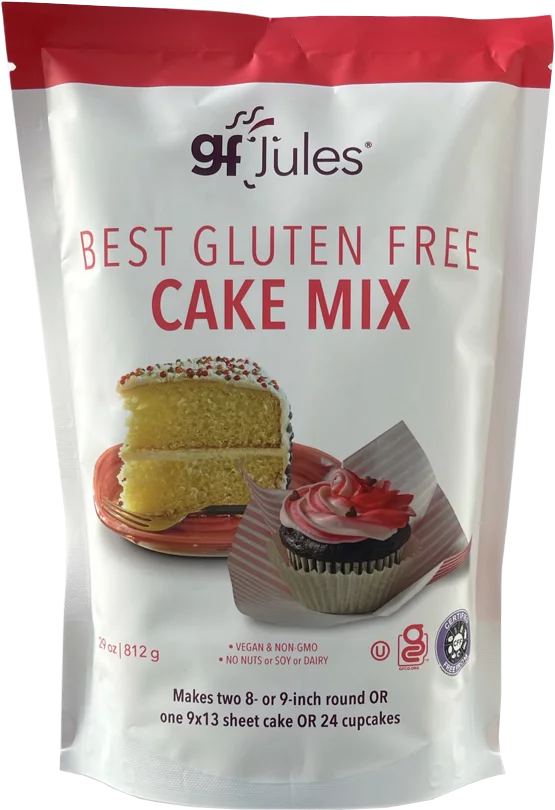
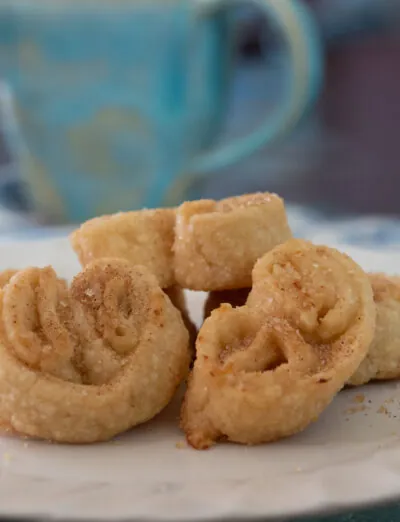

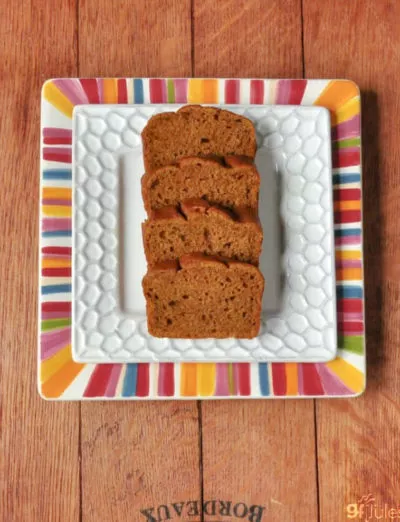
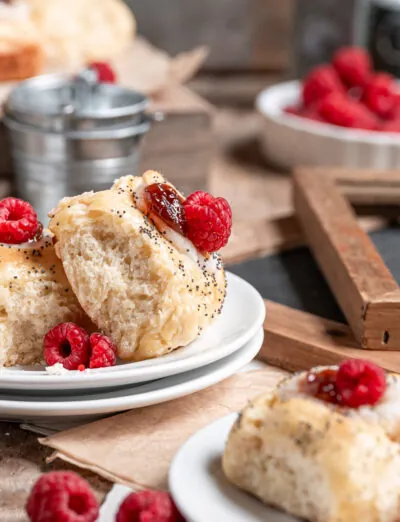







I followed this recipe to the letter and was very disappointed. I made a double batch and had to use a whole batch just for the base. The crust was hard, stiff and the opposite of a good gluten free pastry. I like the flour mix but for pastry I will be sticking to Donna Joe’s flawless pie crust.
Hi Whitney, so sorry to hear that. I’m not sure where things might have gone wrong for you, as this recipe has never failed me! Did you watch the videos and compare your dough to what mine looked like while I was working with it? Were you using different fats from the ones I used? I’m confused as to why you had to use a double recipe for only one crust — that would definitely make it hard when baked because it would be too thick of a crust. You can always feel free to email us at Support@gfJules.com anytime to walk through recipes if you want some extra help. I’d love to help you get this right, since it’s such an incredible recipe!
~jules
My sons girlfriend is gluten free and dairy free. When I make the crust I will use the Earth Balance and Crisco combo. Do you know if both those items are gluten and dairy free?
I can’t wait to try your recipe. I am a baker by heart and I want to still bake for my son,
Hi Nancy, so wonderful that you are still wanting to bake for your son. I understand completely!!! And yes, Earth Balance and Crisco are both gluten- and dairy-free, so you are good to go, there! Happy baking!!
~jules
Next to your breadstick recipe this is my next favorite recipe. I don’t even bother to make gluten crusts when I bake for others, this is my go to recipe, it makes such a nice flaky crust, my family prefers it. It’s great with any filling, and I find I can use my kitchen-aid stand mixer with paddle to cut the shortening into the flour., in fact it makes nice crumb. Another great recipe! Thanks!
Aw, you are SO very welcome, Tuck! I’m thrilled to hear that you are enjoying this recipe so much. I agree with you – there’s just no need for gluten crusts in the world when gluten free crusts can be THIS GOOD!!!
~jules
What size pie pan do you recommend? I couldn’t find any reference to that in the recipe.
Hi Andryea, great question! I actually have used all different size pans with this recipe, as you can see from the pictures. Most are in the 8-9inch range, but I have some that are over 10 inches. You just need to make sure the circle of dough you’ve rolled out is large enough to fit into and up the sides of the pan before you transfer it. Happy baking!
~jules
Your recipe is super similar to my tried and true that I used for years before discovering I had celiacs. Mine always called for refrigerating the dough to keep the fat (all butter, can’t do soy in shortening) firm and solid for extra flakiness. Your recipe directs to simply put it aside at room temp. Is this just your preference or does the flour not work as well if it’s refrigerated?
Yes! It is based on my grandmother’s recipe! I also used to refrigerate it before rolling out but I have found that unless it gets warm, it still works well left at room temperature and it’s a little bit less fragile. That being said, especially in the summer, I will often put the dough ball wrapped back in the refrigerator for a bit while I’m preparing the filling just so the fat doesn’t melt. I also use Spectrum organic palm all shortening which has no soy in it, so that’s something you might want to look for. I really like using both butter or vegan butter and shortening, as it creates even more flaky layers since the two fats melt at different rates in the oven while baking. I hope that helps! Enjoy!
~jules
What should I use if no palm oil? Coconut oil was strong. Crisco? It was pretty tough so must have over-done the pastry knife and butters. used the ico cold vodka and let it rest before rolling. I was also making a pasty vs true pie crust. Will try again as a true pie
Hi Kay, if you’ll notice in my recipe I do not recommend coconut oil for several reason — it does have a strong flavor, but it also tends to make the pastry dough more fragile (and hence, frustrating to work with!). Crisco works fine instead. I hope you give it a try again and do read all my tips and recommendations, as they’re there to help you make the best pie crust or pastry possible!
~jules
my daughter cannot eat the xanthum gum. Is there a substitute?
Hi Geri, check out this article for substitution tips!
~jules
Guar gum works too
Hi Jules, it is now 2 days before Thanksgiving. In looking for a recipe for GF pie crust I came upon your site. Is your flour available in any grocery stores? Also, can I use lard for the fat? I usually use a combination of lard and butter but my son is lactose intolerant and gluten sensitive. I have coconut flour, potato flour, almond flour and oat flour on hand. No gums.
Hi Elizabeth, sorry not to see this message until today – the phones have been ringing off the hook with questions! Here’s a link to stores which carry my gfJules Flour; otherwise, you would need to order it and it’s too late for Thanksgiving, unfortunately. For future reference, we CAN overnight products, so that should help. Regarding lard, that’s fine; regarding coconut oil, I don’t like using it in pie crust dough because I think it makes the pastry a lot more fragile (See my photos in this post). To make a pumpkin pie for tomorrow without a crust might be the best bet. Here’s my recipe for that: https://gfjules.com/recipes/easy-as-pie-pumpkin-pie-no-crust-needed/. I hope that helps you both have a delicious thanksgiving!
~jules
So happy with th flavor of the crust which was under the filling. Rolling out and mixing went really well. The crust that rose above the filling was very crunchy. Not the crisp but tender melt in the mouth gluten crust. Is this as it should be? I. Tried not to overbake but needed to bake sufficient time for my filling to set. I used a pie shield for half the cook time. The crust was soft and pliable prior to baking. Please…help! This is the best gf crust I have tried. Is there a way to achieve a softer edge?
Hi Cay, I’m assuming you used my gfJules Flour? Beyond that, let’s talk about the fats you used. Also, did you use the vodka trick? Let me know all the ingredients you used and the temperature of them when you added them. Did you mix with a fork, pastry blender, mixer or food processor? Did you allow the dough to sit wrapped at room temperature before rolling out? What kind of pie did you bake with it? It doesn’t sound like a two crust pie – was it just a one-crust pie? How long did the the pie bake and at what temperature? Did you brush anything onto the crust before baking? How long did you cover the crust? Did I ask enough questions? 🙂
~jules
Thanks, Jules. Yes, I used your flour blend, I used all the ingredients you listed in your recipe. I mixed lightly with a pastry blender. My dough did sit out a bit…but as my kitchen was warm I didn’t let it sit long.;…no more than 10 minutes. It was still cold, but rolled out far more easily than any gf pie dough I have tried. I brushed the edge of the single crust with an egg wash. My maple syrup pecan filling was baked at 375 for 45 min as per directions. It could have gone a bit longer for a better set…my syrup was a bit thinner than normal this year. I so appreciate your response. My grandson is not celiac, but has true gluten allergy…as high as can be rated by bloodwork. His reaction to wheat gluten is anaphylactic. Pie is my favorite think to bake!
Oh, and the pie edge was covered with a metal pie shield during the 2nd half of the baking time.
I’m so glad you got back to me with the information, Cay. It sounds like you did everything right, but next time cover the crust edges for the first part of the bake — knowing what happened this time, perhaps leave them on almost the entire bake, brushing with more egg wash when you remove the covers and only bake for 5 or so minutes without the covers. See how it goes then, and be sure not to let the dough get too warm before you roll it out. Let me know how it goes next time — so glad that the dough was workable and that the recipe of the crust was good!
~jules
Hi there. I am in South Africa and we do not have your gf flour here. Can you perhaps let me know which gf flours to blend to get a good result please?
Hi Colette – welcome to my site! Check out this article on gluten free flours and blends. It should help you put together a solid blend from ingredients you can find locally. Happy baking!
~jules
I’ve been making pie crusts for 25 yeqrs with regular flour, crisco shortening, salt, water and oil, which created a really flaky crust, now looking to create an equally flaky GF crust. Have you tried in your recipe all shortening? Does the combo of butter and shortening have better flavor?Thanks!
Hi Marci, I like using some butter and some crisco both for flavor and for flakiness. They melt at different rates which actually makes an even flakier crust! I’d love to hear what you think if you try it!
~jules
Thanks for responding so quickly. And yes I am going to try your recipe and will let you know.
Thanks!
Wonderful!
~jules
I never have vodka at home
I have Gin , snaps , but not vodka
What should I do?
Hi Elda, I’ve actually used vodka or bourbon or whiskey and they’ve all turned out well. Try the gin!
~jules
Amazing recipe using gfJules amazing flour! I didn’t have vodka, so I used gin, and the crust for my Quiche Lorraine was tender, flaky, excellent. Even my hubby (non-gf) thought it was wonderful. ???? I’m absolutely in love with Jules’ products, her recipes, and her personable responses every time I’ve had a question. Highest recommendation!!
FYI, I’m going to use bourbon in my next piecrust. ????
YES! So very happy to hear it! And good to know that gin worked well – another reader was just asking about that! And yes, bourbon works deliciously, too — especially in a pumpkin pie – YUM!!!!
~jules
Making a tarte tartan. Cant I simply roll on wax paper or plastic wrap.
Hi Mary, I don’t find that technique easy, as it pulls against the crust. I’ve never liked doing that myself, but if you like working with wax paper or plastic wrap, go for it!
~jules
Since vodka is usually grain based ( weat, barley and rye) what vodka are you using that lists itself as gluten free?
Thanks
Hi Laura, good question and I’m happy to help. Distilled grain alcohols including vodka, bourbon, whiskey, scotch, brandy, and gin ARE gluten free even though they are made with gluten containing grains. The distillation process actually removes the gluten from the end product, so unless the manufacturer adds gluten as a flavoring AFTER distillation, those liquors are indeed gluten free. If you prefer, you can always just use a potato vodka – there are several brands. Tito’s is one that markets itself as gluten free. Here’s more information on how, why and what alcohols are gluten free: https://gfjules.com/alcohol-gluten-free/
~jules
Excited to try this!! I will be using Ciroc vodka- made from grapes, finding that the grain based vodka still effects me even after distillation …. ???? I tried the potato vodka – it has a weird aftertaste. Tito’s is from corn so a no go for me as well-
I’m glad you’ve found a solution and I can’t wait to hear how the recipe goes for you, Teri!
~jules
Best pie crust I have ever made. Took 3 more Tbs. Vodka and two of water — my flour must have been dry. Thank you,
So glad you added more liquid if it was needed, Donald. And of course, SO happy you tried it and loved it!!
~jules
Hi Jules,
Your site is great and I can’t wait to try you all purpose flour. What are the ingredients in your flour? I found the ingredients when reading the gf kitchen article,but now I can’t find it.
I have tried 3 different brands, so far. All with very disappointing results for pie crust. Pie crust are my goal. Thank you.
Sincerely,
Patricia
Hi Patricia, making pie crusts is now one of my favorite things to make gluten free! But it’s only because of my gfJules Flour. I had given up on gluten free pie crusts some years ago (after too many tears!) but with my flour blend, it’s easy to roll out and transfer the crust and it makes all my pies soft and tender. It’s just amazing. I can’t wait to for you to get to try it!!! About my flour, here’s the link to the page with all the information on ingredients (scroll down) and facts about the flour itself. Let me know if you have any other questions. You can always email us at Support@gfJules.com. Happy baking!
~jules
This was the easiest pie crust I’ve ever made! Whip it up, and bust it out. I won’t avoid them any longer.
Oh I’m SO happy to hear that, Beth! THAT’s the way it’s supposed to be!!!!! So happy you’ll be baking pies from now on without anxiety!
~jules
We don’t have any thing but a small btl of white wine, will that work
Hi Jan, I would recommend just using 1-2 Tbs. white vinegar instead, if you don’t have the vodka. The rest, cold water. Let me know how that goes!
~jules
Question….can I make the crust and add quiche ingredients and cook the next morning? Will the crust disintegrate because it is wet?
Thanks
Hi Stacy, I think I would recommend making the crust and covering it and freezing it overnight. You can put the quiche mixture in the fridge and then follow these directions to bake the next day with the frozen pie crust. Let me know how it goes!
~jules